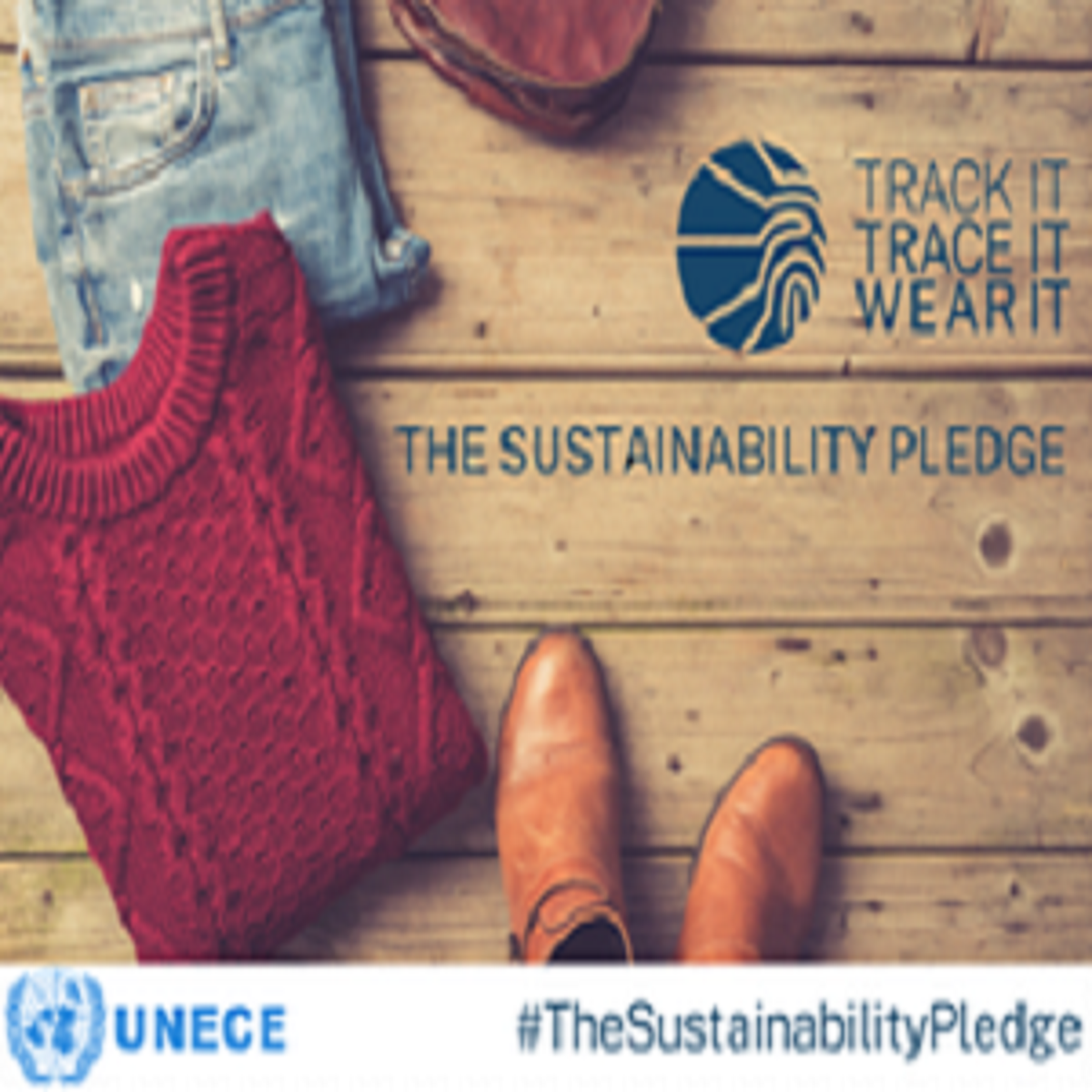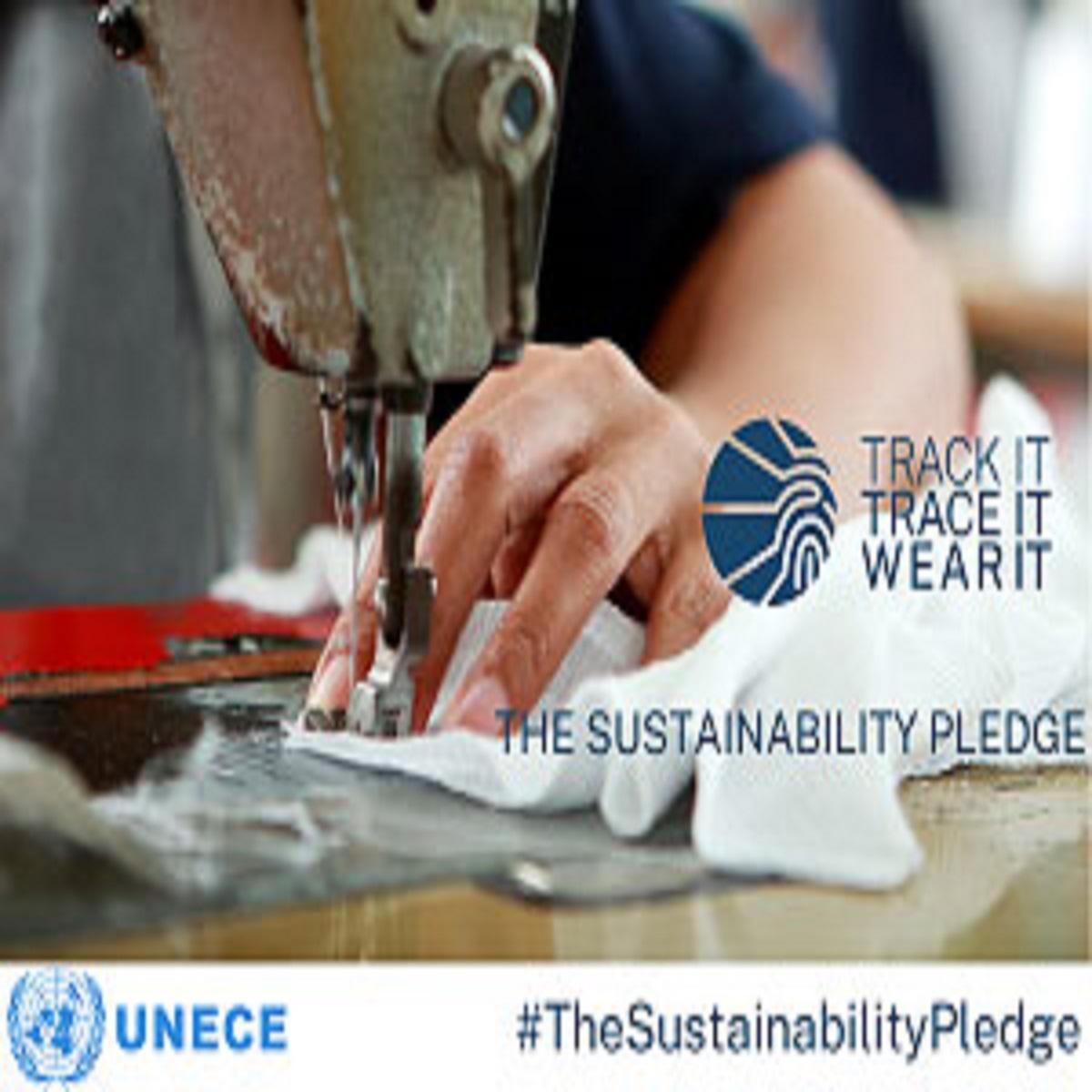Module - UNECE Blockchain Pilot
Identify traceable assets and value chain actors

The UNECE initiative traces a product forward or backward along all stages of the value chain. An identification of products is conducted by the project team with the lead brand, followed by the evaluation of inputs. Afterwards, the mapping of the value chain partners involved in all stages of the selected product value chain is performed.
Some of the selected products include:
- Intermediary, semi-finished products, such as yarn and fabrics
- Finished products, such as a pair of jeans, a shirt, shoes or a handbag
The evaluation of inputs, among others, refers to:
- Cotton fibre quality
- Type of leather
- Water
Chemicals
Onboard value chain partners

Once partners are identified, they are invited to get directly involved in the traceability and transparency process. For this step, a working group among supply chain partners is established, led by the one that requested the traceability and transparency of the asset and its associated processes (“lead brand”). Normally, the manufacturer/brand wishing to trace an asset would contact its supply chain partners to collect information about a specific product and explain the importance of enhancing the product’s traceability and transparency.
Evaluate sustainability hotspots and mitigate measures in place
Pilot partners assess the main sustainability hotspots for the raw material production, processing and the industrial phases associated with the selected traceable assets. They can refer to the risk information for the corresponding value chain, available from UNECE tools, and past experiences or mitigation measures they already have in place, including auditing and third party certification.
Sustainability hotspots in textile and leather manufacturing processes include:
- Insecticide, pesticide and fertilizer use
- Hazardous and toxic chemical use
- Water consumption and pollution
- Greenhouse gas emissions and air pollution
- Energy consumption and efficiency
- Soil and land degradation
- Biodiversity and ecosystems depletion
- Deforestation and habitat loss
- Solid waste
- Animal welfare
- Human rights and labour rights
Once the product and the raw materials, as well as the industrial processes and sustainability hotspots are identified and evaluated, UNECE and value chain partners formulate one or more claims based on the sustainability measures they have in place and related certifications, the relevant regulations on claim formulation and the guidance on claims developed under the ECE project.
Samples of a multi-issue sustainability claim:
- Cotton Example: “The fabric of these jeans is made of 65% regenerated cotton yarn coming from the preconsumer waste of our Italian fabric supplier and of 35% virgin cotton sourced from Türkiye. From the yarn up to the finishing of the denim material the processing steps avoid the use of chemicals that are harmful to health and the environment”.
- Leather example: “The leather in this product has been sourced from Denmark and manufactured in Germany, in accordance with Leather Working Group, ISO and ZDHC standards which promote sustainable environmental and responsible chemical use practices.”
Complete the TT Matrix

Once the claims for the product and/or the materials to be traced are formulated, the partners work with the UNECE project staff to develop a data collection template for traceability and transparency, called a “TT matrix”. When completed, this matrix should contain all the data to be collected for the business processes in the value chain. The partners fill in the matrix selecting the sustainability risks they want to address and the certification(s) or standard(s) to accomplish this. The collected data differs according to the selected claim(s). The TT matrix data collection template is aligned with the ISO 19987 (EPCIS) standard, based on the so-called “5Ws” model (who, what, where, why (how), when), which is explained in the ECE Recommendation No.46 and guidelines, and in Part 2 of the project’s business requirements specification.
The five EPCIS dimensions refer to what, when, where, who and why and include data on sustainability performance:
- What: Object ID (e.g., cotton, yarn, pallet)
- When: Date and time (e.g., date/ time occurrence)
- Where: Location ID (e.g., Italy, Prado)
- Who: Party ID (e.g., weaver)
- Why: Process Type (e.g., weaving yarn to fabric)
- How: Certificate/ Report ID (e.g., certificates)
Traceability event types refer to:
- Transaction (e.g., objects in documents)
- Transformation (e.g., inputs production output)
- Aggregation (e.g., packages on/ from pallet)
- Object (e.g., harvested, moved, recycled)
Each of the traceability event types range from transaction to object event, and provide the collected data: when the event occurred; at which location; what objects (e.g. products/materials) were involved as input or output of a transformation; which business partners (parties) were involved; and under which sustainability conditions production was done. Supply chain visibility can be established when business partners share traceability events, including the related sustainability details. The blockchain platform uses the transaction event and transformation event along with certification evidence.
Training and coaching by UNECE staff

In order to guarantee a correct uploading to the blockchain platform, training and coaching sessions are delivered by the UNECE experts team and involves, to the extent possible, representatives from all the users/actors involved in the value chain (usually about ten people).
After appropriate training, business partners use the TT matrix to collect the information related to the 5W model for the relevant business processes, especially identifying transparency data (i.e. the data/documents supporting their claims) and involving their suppliers in order to cover the whole value chain (to the extent possible). In accordance with the assurance models identified within the project (e.g. self-declared, self-assessed, second-party verified, third-party certified), business partners provide one or more documents to substantiate their claim. For example, for claims on country of origin they could use transaction documents (shipping notes, commercial invoices, delivery notes, transportation documents, packing lists) and, for social and environmental claims, they could provide assurance documents (certificates, audit/inspection reports, laboratory test result reports, NGOs/civil society attestations, declarations).
Upload data on the blockchain platform

Once made available through the TT matrix, the data and the necessary documentary evidence is uploaded to the blockchain platform by each business partner from the upstream to the downstream parts of the value chain in order to define the supply chain on the platform and the disclosure levels related to the uploaded documents. Uploading the data is done using an interface, which means that supply chain partners do not interact directly with the blockchain technology.
UNECE together with the University of Applied Sciences and Arts of Southern Switzerland (SUPSI) developed a user manual to provide guidance to end users for navigating and utilizing the blockchain platform. This manual gives users a general overview of the system, and practical steps on how to register transformation and transaction events, as well as certifications and assessments. It also provides participants with guidelines for connecting an entire supply chain to the system and information on system security aspects. A specific glossary has been developed to familiarize users with the wording and the most common terms of the methodology on the platform.
Confirm results

UNECE and partners confirm the results of the data upload and the claim formulated.

